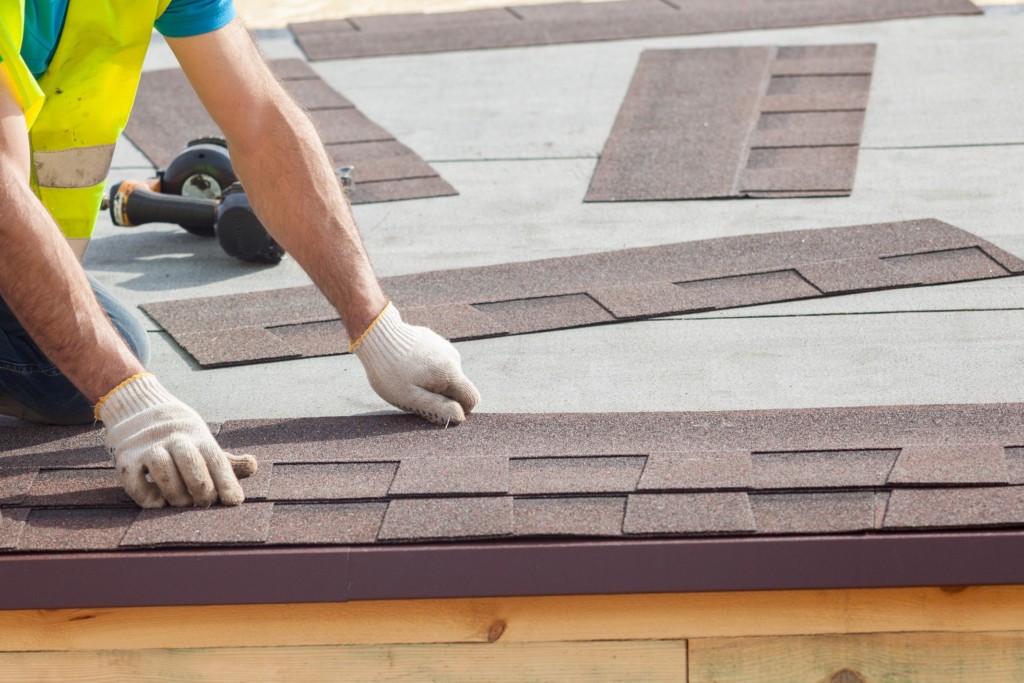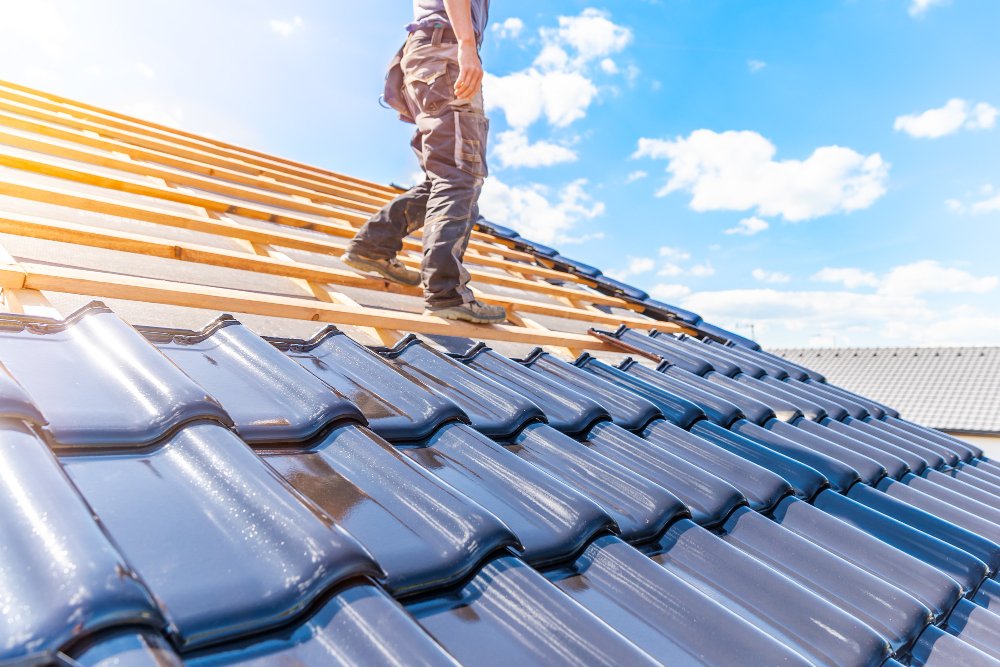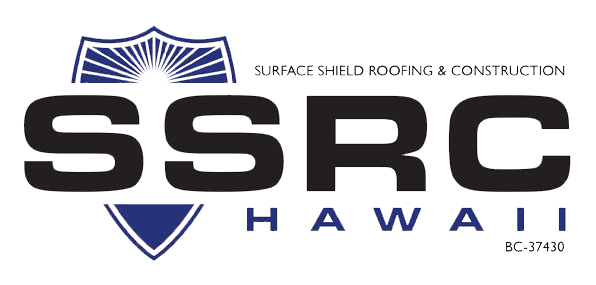Best Ways to Evaluate roofing contractors honolulu for Your Next Project
The Ultimate Checklist for Roof Covering Install: Ensuring High Quality and Resilience
The procedure of mounting a roof requires careful focus to information. A thorough list can aid guarantee quality and sturdiness throughout the task. From evaluating the existing roof covering problem to choosing the right materials, each action is vital. Appropriate preparation and devices play an important role in attaining an effective installment. Nonetheless, lots of neglect the significance of last examinations and continuous maintenance. Understanding these aspects can significantly impact the long life of a new roof.
Examining Your Current Roofing System Condition
Exactly how can one successfully determine the problem of their current roofing system? A thorough assessment is important for evaluating a roof covering's honesty. House owners should begin by analyzing the roof from the ground, trying to find visible indications of wear such as missing out on shingles, sagging locations, or discoloration. Closer evaluation can be done by accessing the roofing itself, where one need to look for broken or curled shingles and check blinking around vents and chimneys.Additionally, the inside of the home warrants interest; water discolorations or mold growth on ceilings and wall surfaces may suggest leakages. Attic inspections can expose possible concerns, such as inadequate ventilation or indications of moisture.Regular examinations, ideally twice a year, can assist determine problems early and avoid pricey repair work. By comprehending the roof covering's existing state, homeowners can make informed decisions about necessary upkeep or replacements.
Selecting the Right Roof Products
When selecting roof materials, what aspects should homeowners consider to guarantee a sturdy and reliable selection? First, the environment plays a considerable duty; products ought to hold up against neighborhood climate conditions, whether it's hefty rainfall, snow, or intense sun. Next, the durability of the product is essential; alternatives like steel or slate deal expanded life-spans compared to asphalt shingles. Homeowners should additionally evaluate the material's weight, as this can influence the architectural stability of the home. Additionally, looks matter; the chosen product ought to complement the total building style. Energy effectiveness is one more factor to consider; some materials reflect warmth, lowering air conditioning expenses. Finally, budget restrictions will determine choices; while some materials might have a reduced in advance price, long-term longevity can result in higher financial savings. By evaluating these variables, homeowners can make educated decisions that improve their roof's high quality and long life.
Preparing for Installment
Prior to the installation procedure starts, homeowners should ensure that their building is sufficiently prepared to suit the new roof. This prep work includes a number of vital steps to ensure a smooth and effective installation. First, home owners need to clear the area around your house of any type of debris, devices, or furnishings that might prevent access for specialists. In addition, it is essential to educate next-door neighbors about the upcoming work to reduce interruption and safe cooperation.Next, house owners must evaluate their existing roof covering and architectural elements, resolving any kind of prospective problems such as rotting timber or leaks that can impact the installation. Securing essential licenses and sticking to neighborhood building codes is crucial for compliance and safety and security. Scheduling the installment during positive climate conditions assists prevent delays and guarantees that the work profits without complications. Appropriate preparation establishes the structure for a successful roof covering project, inevitably enhancing the durability and effectiveness of the brand-new roof.

Important Tools and Tools
In roof covering installation, having the right devices and tools is important for an effective project. This includes crucial safety and security equipment, numerous roof covering installment tools, and reliable product taking care of tools. Correct preparation and choice of these products can substantially boost performance and safety and security at work website.
Security Equipment Requirements
Safety and security equipment is a necessary element of any roof covering installment task, making sure the wellness of workers at raised heights. Important safety tools consists of construction hats, which protect versus falling particles, and security goggles to shield the eyes from dust and particles. Non-slip shoes is considerable for preserving grip on high surfaces, while harnesses and lanyards provide loss defense, protecting against severe injuries. Gloves aid safeguard hands from sharp products and reduce exhaustion during expanded periods of job. Additionally, high-visibility vests improve visibility, advertising awareness amongst employee and neighboring employees. Using ear protection might additionally be suggested in noisy environments. Generally, adhering to security equipment requirements is critical for a safe and efficient roof covering installation procedure.

Roof Setup Tools
Proper safety steps prepared for a successful roofing project, but having the right tools and equipment is just as important. Important tools for roofing installation consist of a ladder, permitting secure accessibility to the roofing, and a roof nail gun to assure efficient and safe and secure fastening of products. A chalk line is essential for marking straight lines, while an energy blade is needed for reducing roofing products accurately. Additionally, a pry bar aids in removing old shingles. Employees ought to additionally have a level to confirm proper alignment and drainage. Finally, an excellent set of work handwear covers safeguards hands while offering grasp. With each other, these devices assist in a smooth roofing process, enhancing both top quality and longevity.
Product Handling Equipment

A selection of product handling equipment is crucial for an effective roof covering installation procedure. Equipment such as forklifts, raises, and dollies facilitate the motion of heavy products like roof shingles and underlayment to the work site and onto the roofing. Making use of scaffolding and ladders assurances risk-free accessibility to elevated locations while minimizing the danger of injury. Tarpaulins and containers are required check here for appropriate storage space and organization of materials, preventing damages and guaranteeing very easy retrieval. Furthermore, a crane might be needed for bigger roofing jobs to raise significant materials directly onto the roofing. Correct training in using this tools is necessary; it boosts workflow performance and adds to overall project security, ensuring an effective roof covering installment.
Step-by-Step Installment Process
The step-by-step setup procedure is crucial for an effective roof installation. It begins with preparing the roofing system surface, complied with by the appropriate setup of underlayment, and ends with the reliable safeguarding of roof covering products. Each of these actions plays a crucial duty in making certain the longevity and functionality of the roof covering.
Prepare the Roof Surface Area
Preparing the roofing system surface area is necessary for ensuring a successful installment of roofing products. This procedure starts with a thorough examination to determine any type of existing damage or particles. Any loose roof shingles, extending nails, or old roof covering products have to be gotten rid of to produce a tidy, smooth foundation. Next, the roof deck need to be looked for rot or architectural problems, as these can jeopardize the integrity of the brand-new roof covering. After fixings, a comprehensive cleaning is essential; this includes sweeping away dirt, leaves, and any kind of other impurities that might hinder attachment. Ensuring correct drain and air flow is important, as these factors influence the longevity of the roof covering. A well-prepared surface area sets the stage for excellent setup and toughness.
Set Up Underlayment Correctly
Mounting underlayment correctly is essential for improving the overall performance of the roofing system. The process begins with selecting the suitable underlayment material, which can include really felt, artificial, or rubberized options. Next, validate the roofing system surface area is tidy and dry prior to laying the underlayment - roofing contractors honolulu. Begin at the lowest point of the roofing, turning out the underlayment flat and overlapping each row by a minimum of six inches. It is essential to secure the underlayment in position with staples or roof nails, staying clear of gaps or wrinkles that could jeopardize water resistance. Ultimately, trim excess product at the sides, guaranteeing a neat coating. This precise setup step is essential for supplying an included layer of defense versus dampness and enhancing resilience
Protect Roof Materials Successfully
After confirming the underlayment is appropriately mounted, the following step includes securing the roofing products properly. Initially, the roofer ought to collect all necessary materials, consisting of tiles, nails, and flashing. Starting at the lowest factor of the roof covering, roof shingles must be stocked a staggered pattern, verifying proper overlap to stop leakages. Each shingle must be fastened with nails, using the manufacturer's advised spacing and quantity. It is vital to drive nails straight, staying clear of over-penetration, which can jeopardize the material. Blinking must be installed around smokeshafts and vents to improve waterproofing. The contractor must conduct a complete evaluation to validate all products are securely secured, as this will significantly influence the roof's total resilience and durability.
Performing Final Assessments
Detailed final assessments are necessary to guarantee that a recently mounted roof satisfies all safety and security and quality standards. This important action involves examining the whole roof for any type of possible problems that might emerge post-installation. Assessors should analyze the positioning of roof shingles, making sure they are properly secured and devoid of flaws. Blinking and air flow systems need to additionally be assessed for proper installment and functionality.Additionally, the inspector should check gutters and downspouts to confirm they are suitably placed to promote water drain. Any kind of indicators of leaks, misaligned products, or insufficient sealing around penetrations must be addressed instantly. Roofing contractors ought to also see to it that all particles from the installment process is eliminated, leaving the site tidy and risk-free. Carrying out these thorough assessments assists prevent future complications, inevitably extending the life expectancy of the roofing and offering homeowners with comfort regarding their investment.
Maintaining Your New Roof Covering
Appropriate upkeep is important for assuring the longevity and efficiency of a new roofing. Property owners ought to perform regular examinations at the very least twice a year, ideally in spring and autumn, to recognize potential problems early. Throughout these inspections, they must look for signs of damages, such as missing out on shingles, leaks, or particles build-up, which can hinder drain and promote mold growth.Cleaning seamless gutters and downspouts is crucial, as clogged up systems can bring about water damages and architectural problems. In addition, cutting looming branches can protect against abrasion and particles buildup on the roof covering surface.It's additionally recommended to arrange specialist assessments every few years to assess the roofing's problem extensively. Keeping records of maintenance tasks and fixings can help track the roofing's performance over time (honolulu roofing materials). By adhering to a consistent maintenance regimen, homeowners can shield their investment and assure their brand-new roofing system continues to be effective for several years to come
Regularly Asked Concerns
For how long Does a Normal Roofing System Setup Take?
The period of a normal roof covering installment varies based upon variables such as roofing size, products, and weather condition conditions. Typically, it can take anywhere from one day to several weeks to complete the installment.
Can I Mount a New Roofing Over an Existing One?
The question of setting up a brand-new roofing over an existing one often arises. Several property owners consider this alternative for cost-effectiveness, however it is vital to examine neighborhood building ordinance and the structural integrity of the existing roofing system.
What Allows Are Needed for Roofing System Installation?
Prior to setting up a roofing system, one have to check regional policies. Generally, structure licenses are required, in addition to inspections to assure conformity with safety requirements and zoning regulations. Consulting with regional authorities is important for correct support.
What Service warranties Are Available for Roofing Products?
Different service warranties exist for roof covering materials, generally consisting of producer service warranties covering defects and efficiency. Furthermore, some service providers provide craftsmanship guarantees, making sure setup high quality. Purchasers must thoroughly assess terms to recognize coverage period and restrictions.
Exactly How Can Climate Influence the Setup Process?
Climate substantially influences the setup procedure, as rainfall, snow, or extreme temperature levels can postpone work, affect material attachment, and concession security. Appropriate planning and scheduling around weather prediction are important for effective roofing system installation.